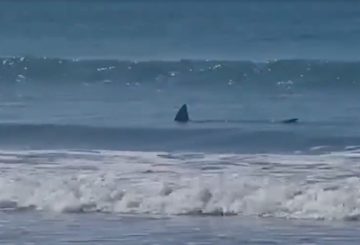다음 주에는 오클랜드의 린필드 칼리지 (Lynfield College) 학생들이 세계 로봇 선수권 대회에 참가하기 위해 미국으로 여행할 예정입니다.세계 최대 규모의 로보틱스 경연대회로, 56개국에서 온 900개 팀이 댈러스에 모입니다.
16세의 윌리엄 후퍼와 15세의 소하일 아시야반이 이끄는 린필드 칼리지 그룹은 세계 무대에서 경쟁할 로봇 두 대를 준비했습니다.바퀴와 모터, 그리고 모든 것을 제어하는 두뇌를 갖춘 이 로봇들은 미국으로 배송될 준비를 마쳤습니다.로봇 중 하나에는 회전하여 물건을 모을 수 있는 레버도 있습니다.
학생들은 1년 동안 이 로봇을 제작했습니다.후퍼에 따르면 로봇들은 피봇 레버라고 하는 전동 흡기구를 사용하여 삼각형 모양의 공을 집어 올립니다.게임의 마지막 30초 동안 로봇은 바에 매달려 있어야 하며, 고도가 다르면 다른 점수를 획득할 수 있습니다.
Asyaban은 두 가지 유형의 로봇이 있다고 설명했습니다. 하나는 경쟁 로봇이고 다른 하나는 플레이할 수 있는 로봇입니다.게임을 하는 로봇에는 명령을 할 수 있는 두뇌, 배터리, 라디오가 필요합니다.반면 경쟁 로봇은 공을 빠르고 효율적으로 집어올릴 수 있는 동력전달장치와 시스템이 필요합니다.
Hooper에 따르면, 이기는 로봇을 효과적으로 조종할 수 있는 훌륭한 운전자가 필요하다고 합니다.볼 피커와 같은 로봇의 하위 시스템도 잘 작동해야 합니다.로봇은 빨라야 하지만 너무 빨라서는 안 됩니다. 일부 로봇은 너무 무거워 속도를 지탱할 수 없기 때문입니다.
Hooper와 Asyaban은 연습과 학습을 통해 로봇을 만드는 법을 배웠습니다.그들은 또한 미국 및 전 세계 사람들과 협력하여 로봇을 제작했습니다.그들은 경쟁과 로봇 제작에 대한 열정을 공유하는 다른 사람들을 만날 기회를 갖게 되어 매우 기쁩니다.

















































-360x245.jpg)










